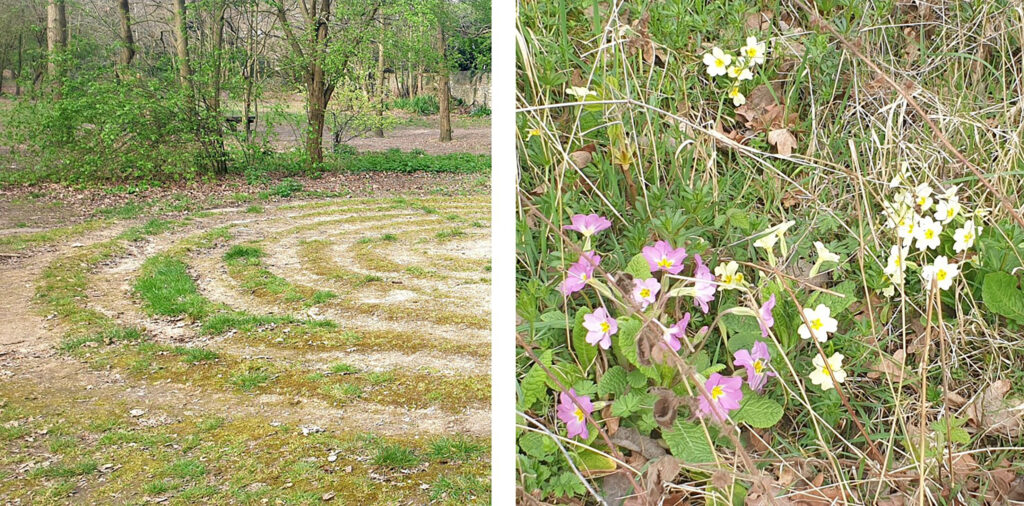Easter on the Green / Primroses
Yesterday, glorious sunshine prompted a visit to the Green and a quiet walk on our labyrinth. Thanks to the careful restorative work being carried out by Maria Strutz, this delicate structure of moss and grass on crumbling concrete is slowly recovering from last year’s dry summer and the usual rigors of winter.

As I followed the labyrinth’s winding path my eyes were constantly drawn to a colourful patch of primroses (Primula vulgaris) growing nearby in amongst a tangle of long, dry grass. At the moment clumps of these lovely, low-growing flowers are scattered throughout the Green’s wooded areas. Most are creamy yellow and just a few are purple, both with their typical bold, yellow centres. Like most flowering plants, primroses are hermaphrodite but I’ve just learned that they are also ‘heterostylous’. This means that individual primrose plants bear either ‘pin flowers’ where the central style and stigma (the female part of the plant) are prominent, or ‘thrum flowers’, where the surrounding stamens (the pollen-bearing male parts) are prominent. Fertilisation can only take place between pin and thrum flowers. Next time I’m in the Green I will take a closer look.

I wandered around the Green for a while longer. A couple of dog-walkers and some joggers were there too, and I saw a woman hiding Easter eggs. She was joined a few minutes later by a man and two excited children. The boys darted here and there, happily and competitively filling up their baskets. I stopped for a while by the pond. Beautiful Marsh Marigold (Caltha palustris) are still in full bloom, standing out boldly against the dark water.
